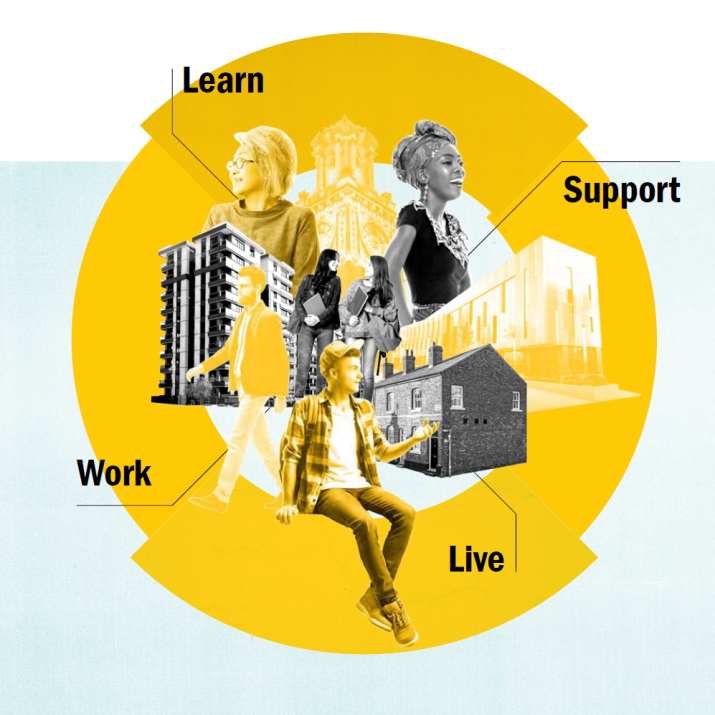Stay up to date with our work
Our monthly updates are a great way for you to stay up to date with our work, events, and higher education news.

A whole university approach recommends that all aspects of university life promote and support student and staff mental health. Good mental health enables learning, work and community. It is fundamental to the core mission of universities.
The Stepchange: mentally healthy universities model is formed of four areas.

Universities transform lives through learning. Higher learning involves challenge and new ways of thinking: it can have a positive impact on a person’s mental health and wellbeing over a lifetime.
However, the way learning is designed, structured and provided may produce a positive or negative experience.

Universities currently resource a wide range of services to support those experiencing mental illness. Demand has increased significantly.
Mental health support services may cover both students and staff or only students. They may include counselling, mental health teams, digital interventions, residential life teams, helplines and after-hours support.
Support services should be:

Good mental health is central to staff engagement, productivity and creativity. The whole university approach brings together staff and student mental health and wellbeing.
Training for staff to be aware of mental health difficulties and to respond appropriately must be set in a wider framework that sets out roles, boundaries and support available.
Training should develop communities that are aware and compassionate and which enhance mental health as well as responding to crises.

The environments, cultures and spaces we live and study in affect our mental health and wellbeing.
Universities should think about:
Promote ways to improve staff and student wellbeing to encourage healthy behaviours (physical activity, healthy eating and sleeping) and to discourage unhealthy behaviours such as abuse of alcohol and drugs.
Create safe and open cultures that encourage inclusion and diversity and actively oppose bullying, harassment and marginalisation.
Design work, learning and living spaces that promote good mental health, encourage access to nature and reduce physical risks.
Work in partnership with students’ unions and guilds to actively support the social integration of students, support academic achievement and retention, and reduce loneliness and improve wellbeing.
Many of the above issues come together in student accommodation. Universities must work closely with accommodation providers and local authorities to ensure safety, good design standards, staff training.
Our monthly updates are a great way for you to stay up to date with our work, events, and higher education news.